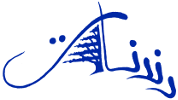FAQ
What is Dandanāt?
Dandanāt is a database that enables interested persons to learn Lebanese basic vocabulary and Lebanese morphology. It contains the vocabulary from a manuscript in use at the University of Zürich as well as other words that have proven to be indispensable for communication in Lebanese Arabic.
At this time, the 2000 lemmata of the basic vocabulary are available and will be continually updated. Each word is accompanied by example sentences, illustrations and audio files. Sound recordings of all the words and example sentences were made by native speakers so that students can listen to the correct pronunciation.
The verb tables enable the learner to access model verbs of all categories of Lebanese Arabic in Arabic script or transcribed into Latin characters.
How do I work with Dandanāt?
The database can be searched for Arabic or English words. Alternatively, you can select thematic criteria to look up vocabulary matching your selection. Found words appear in a list below the the query form. Upon clicking on a row in the list of results, the Arabic word and its English translation appear at the upper right hand corner, and you can listen to it using the adjoining audio player. By clicking on "Additional information," you can access example sentences with sound recordings and illustrations. This can be hidden again by clicking on "Hide additional information."
How do I search for a word in the database Dandanāt?
Select "Search by text." Enter the word you are looking for in English or unvocalized Arabic into the search bar. As you are typing, a list with suggestions appears from which you can directly select the requested word.
Alternatively, you can hit "Enter" to confirm your query, any search results will be listed below.
How do I search for a category of words in the database Dandanāt?
Select "Search by categories" (This is pre-selected when you first load the page). As required, define relevant thematic or didactic features in the corresponding search box, select the language in which the results should be listed, and hit "Search".
The individual search boxes are active only if at least one entry is selected. Multiple selections within one search box can be made by clicking while holding down the Ctrl-key. In the same way, an entry can be de-selected.
Comments on the individual search boxes
Subject: Here you can define subject areas to which the words should pertain. For example, you can look up words from a topic like shopping, leisure activities or hotel. You can look up words from multiple subjects by making your selection while holding down the Ctrl-key.
Lessson: Here, words can be looked up according to lessons in the manuscript in use at the University of Zürich. The last row "*" identifies vocabulary not present in this textbook that have been included in the database anyways on grounds of their importance.

